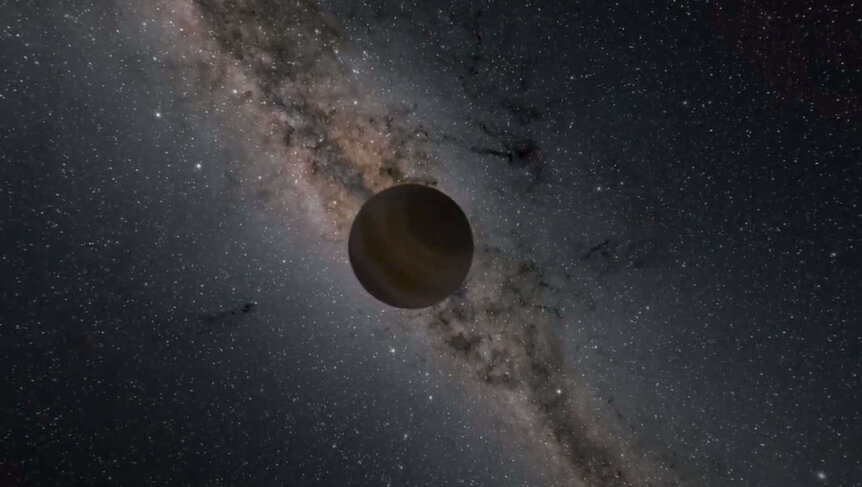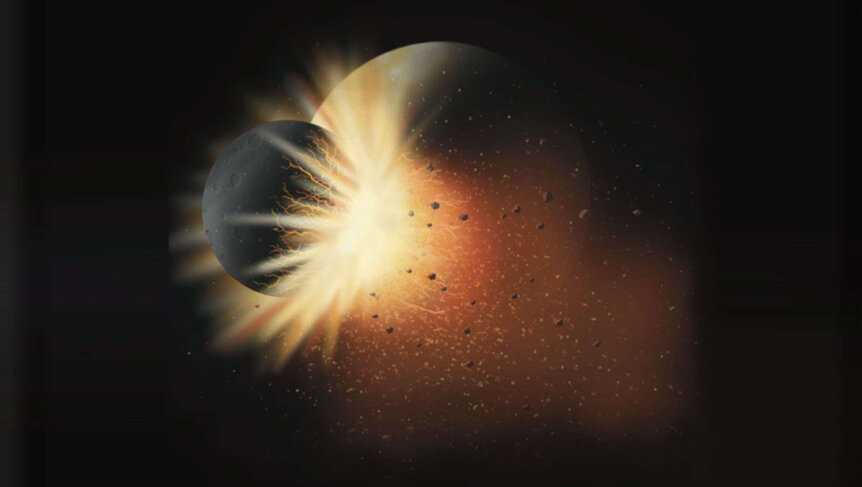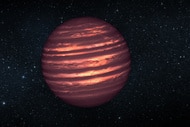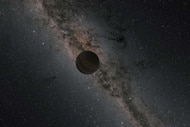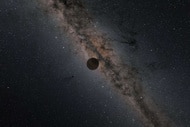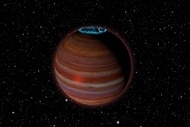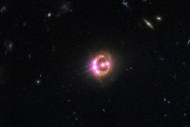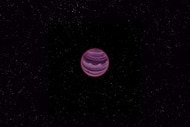Create a free profile to get unlimited access to exclusive videos, sweepstakes, and more!
How Worried Should We Be About Rogue Planets Striking Earth?
Almost not at all. Almost.
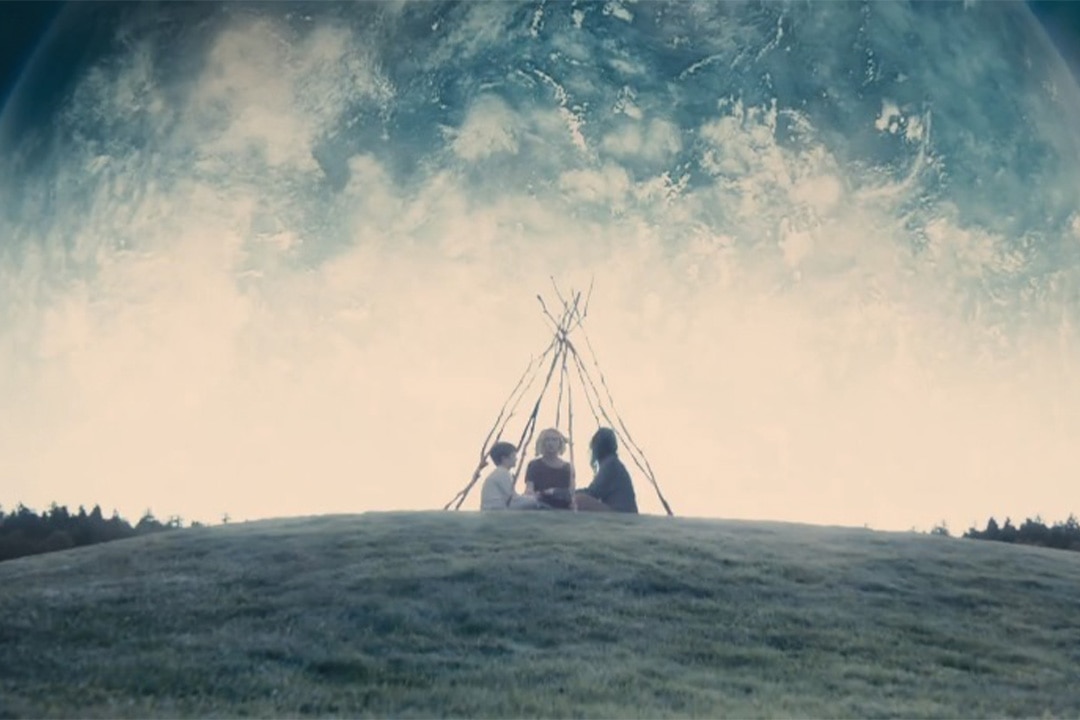
Lars von Trier’s 2011 psychological drama, Melancholia, is set against a backdrop of the apocalypse. We watch Justine (Kirsten Dunst) and the people in her orbit collapse into personal chaos as a rogue planet, the titular Melancholia, races toward the Earth.
Justine first notices the effects of the rogue world when a certain star is no longer visible in the sky. Melancholia has emerged from its hiding spot on the other side of the Sun and it’s blocking out distant stars with its rocky body and cloud swept atmosphere; now it’s on a rapid approach to near-Earth space. Experts assure everyone that it will pass by the Earth harmlessly, and it does, but the gravitational tug from the first pass brings it back for a second, more deadly one.
As far as we can tell, there aren’t any rogue planets hiding in the blind spots of our solar system, but there are plenty of rogue planets out there. They are almost impossible to detect and they don’t play by the rules which usually govern planets. Which is enough to make us wonder if von Trier knows something we don’t.
For More on Rogue Planets:
Rogue Planets Wander the Cosmos Together in Groups
Dozens of Rogue Planets Found in a Nearby Cosmic Nursery
Life Without Light: How Life Could Emerge on Moons Around Starless Rogue Planets
What Is a Rogue Planet?
It’s just a planet, but it wears a leather jacket. Planets don’t necessarily have a whole lot in common with one another. Some of them are small and rocky and some are huge and gaseous. Some have moons or rings and others walk their orbital paths alone. Some have thin, wispy atmospheres and others are thick with clouds; still others are naked and barren. The one thing they all have in common is a cozy gravitational relationship with a star. Rogue planets dismiss that planetary requirement too.
A rogue planet’s defining characteristic is that it floats freely through space, untethered to any parent star. That horrifying fate, an entire world kicked out of the nest to wander the cosmos alone, might be way more common than we previously thought. Some rogues probably form independently, the result of a failed star, while others form inside protoplanetary disks around stars, just like the Earth. In the latter case, they are likely ejected from one of a number of intense gravitational events.
A planet might get separated from its family if another star or black hole passes too close to the system. That atypical gravitational nudge might be enough to ripple spacetime in just the right way and fling a planet out of its orbit. Something similar might happen without the influence of a passing star or black hole, during the early days of a stellar system, thanks to something called planetary migration.
When systems are still forming, planets begin coming together wherever the most matter happens to coalesce. As the star, planets, moons, and other cosmic objects grow and collect more mass, they command more of the gravitational landscape and begin to influence one another in new and changing ways. This leads to a chaotic early period during which the planets are in a state of flux. Planets that form in one part of the system can end up in an entirely different part of the system or get kicked out entirely.
Is There a Rogue Planet Headed for Earth?
Probably not, but it’s hard to say definitively. We know that rogue planets exist and we know that planetary collisions happen. Our own Moon is the product of one such collision between a proto-Earth and a fledgling planet called Theia. The probability of another planetary impact in the future isn’t zero, but it’s probably not worth worrying about.
We find rogue planets primarily through gravitational microlensing. When a rogue planet passes in front of a field of stars, its gravity warps the spacetime around it. Astronomers can tease out a detection from the way starlight bends around the planet as it travels through warped space. The small number of rogue planets we have discovered are far away and in no risk of ever coming anywhere near us. Everything else, the untold number of rogue worlds we haven’t found, that’s all probability.
Attempting to approach a number requires first having some idea of how many rogue worlds are out there and how likely they are to be in any one place (like the same place as the Earth) at any given time. The rough number of rogue planets in our galaxy, let alone the entire universe, is still unknown but one estimate puts it in the trillions. Rogue planets in the Milky Way (and probably in other galaxies, too) might outnumber stars 20 to 1.
They’re out there right now, like lone wolves stalking the dark forest of the cosmos, waiting to pounce. Fortunately for us, that dark forest is pretty dang big and the wolves are wandering aimlessly. Garrett Brown, a celestial mechanics and computational physics researcher at the University of Toronto, estimated the odds of a rogue planet entering the solar system at one in a billion over the next 1,000 years. He puts the odds of it getting as close as the orbit of Mars more like one in a trillion. Pretty long odds.
A separate doomsday possibility with slightly different origins but a similar outcome would be a collision with a planet from our own solar system. It’s possible, over time, that the orbits of one or more planets in the solar system will become unstable. Mercury or Venus might migrate further out or one of the outer planets might snuggle its way in. Regardless of the culprit, the ensuing gravitational chaos could be catastrophic to Earth life even if we didn’t get smacked directly. All of that is unlikely, too.
Our solar system has been stable for billions of years, since pretty shortly after its formation, and it probably will be for a long time yet. While there are limits to how far we can simulate orbits into the future, we’re confident that nothing weird is going to happen for at least tens of millions of years. If you want to hop on the back of another planet’s motorcycle and ride off into the sunset, you’re going to have to come up with another plan. There aren’t any rogue worlds headed our way for the foreseeable future.
But you can live out your doomsday fantasies in Melancholia, streaming now on Peacock.
